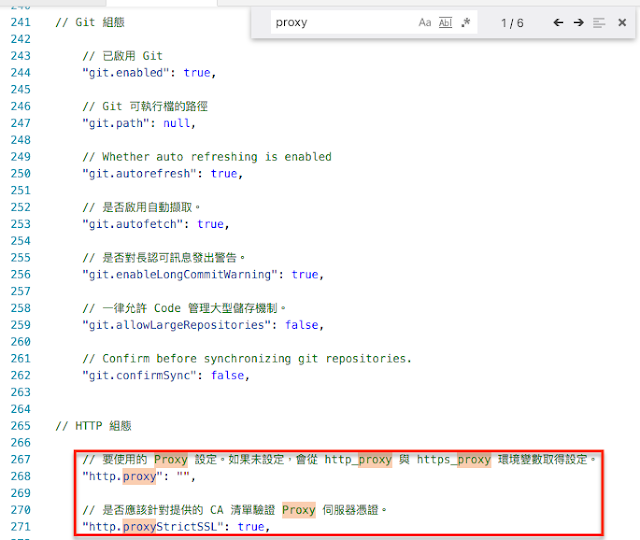

Taipei 101



鶯歌





package albert.practice.designpattern.factory; public interface Juice { void makeJuice(); void deliverJuice(); }
package albert.practice.designpattern.factory; import lombok.extern.slf4j.Slf4j; @Slf4j public class AppleJuice implements Juice { @Override public void makeJuice() { log.debug("making APPLE juice."); } @Override public void deliverJuice() { log.debug("deliver APPLE juice to customer."); } }
package albert.practice.designpattern.factory; import lombok.extern.slf4j.Slf4j; @Slf4j public class OrangeJuice implements Juice { @Override public void makeJuice() { log.debug("making ORANGE juice."); } @Override public void deliverJuice() { log.debug("deliver ORANGE juice to customer."); } }
package albert.practice.designpattern.factory; import lombok.extern.slf4j.Slf4j; @Slf4j public class KiwiJuice implements Juice { @Override public void makeJuice() { log.debug("making KIWI juice."); } @Override public void deliverJuice() { log.debug("deliver KIWI juice to customer."); } }
package albert.practice.designpattern.factory; public enum FruitEnum { APPLE, ORANGE, KIWI; }
package albert.practice.designpattern.factory; public class JuiceStore { public static void main(String[] args) { JuiceStore test = new JuiceStore(); test.processOrder(FruitEnum.KIWI); test.processOrder(FruitEnum.APPLE); test.processOrder(FruitEnum.ORANGE); } public void processOrder(FruitEnum fruit) { Juice juice = null; if (FruitEnum.APPLE == fruit) { juice = new AppleJuice(); } else if (FruitEnum.ORANGE == fruit) { juice = new OrangeJuice(); } else if (FruitEnum.KIWI == fruit) { juice = new KiwiJuice(); } juice.makeJuice(); juice.deliverJuice(); } }
package albert.practice.designpattern.factory; public class JuiceFactory { public Juice getJuice(FruitEnum fruitEnum) { Juice juice = null; if (FruitEnum.APPLE == fruitEnum) { juice = new AppleJuice(); } else if (FruitEnum.ORANGE == fruitEnum) { juice = new OrangeJuice(); } else if (FruitEnum.KIWI == fruitEnum) { juice = new KiwiJuice(); } return juice; } }
package albert.practice.designpattern.factory; public class JuiceStore { public static void main(String[] args) { JuiceFactory factory = new JuiceFactory(); Juice apple = factory.getJuice(FruitEnum.APPLE); apple.makeJuice(); apple.deliverJuice(); Juice orange = factory.getJuice(FruitEnum.ORANGE); orange.makeJuice(); orange.deliverJuice(); Juice kiwi = factory.getJuice(FruitEnum.KIWI); kiwi.makeJuice(); kiwi.deliverJuice(); } }
1 2 3 4 5 | org.springframework.web.client.HttpClientErrorException: 422 Unprocessable Entity at org.springframework.web.client.DefaultResponseErrorHandler.handleError(DefaultResponseErrorHandler.java:91) ~[spring-web-4.3.2.RELEASE.jar:4.3.2.RELEASE] at org.springframework.web.client.RestTemplate.handleResponse(RestTemplate.java:667) ~[spring-web-4.3.2.RELEASE.jar:4.3.2.RELEASE] at org.springframework.web.client.RestTemplate.doExecute(RestTemplate.java:620) ~[spring-web-4.3.2.RELEASE.jar:4.3.2.RELEASE] at org.springframework.web.client.RestTemplate.execute(RestTemplate.java:580) ~[spring-web-4.3.2.RELEASE.jar:4.3.2.RELEASE] |
1 2 3 4 5 6 7 8 9 10 | private void checkProjectIdentifier(String identifier) { Pattern pattern = Pattern.compile("^[a-z0-9_=]*$"); if (!pattern.matcher(identifier).matches()) { throw new RuntimeException("專案代碼僅允許使用小寫英文字母 (a-z), 阿拉伯數字, 虛線與底線"); } if(StringUtils.isNumeric(identifier)) { throw new RuntimeException("專案代碼不可僅有數字"); } } |
1 2 3 4 5 6 | org.springframework.web.client.HttpClientErrorException: 422 Unprocessable Entity at org.springframework.web.client.DefaultResponseErrorHandler.handleError(DefaultResponseErrorHandler.java:91) ~[spring-web-4.3.2.RELEASE.jar:4.3.2.RELEASE] at org.springframework.web.client.RestTemplate.handleResponse(RestTemplate.java:667) ~[spring-web-4.3.2.RELEASE.jar:4.3.2.RELEASE] at org.springframework.web.client.RestTemplate.doExecute(RestTemplate.java:620) ~[spring-web-4.3.2.RELEASE.jar:4.3.2.RELEASE] at org.springframework.web.client.RestTemplate.execute(RestTemplate.java:580) ~[spring-web-4.3.2.RELEASE.jar:4.3.2.RELEASE] at com.cht.commons.web.client.RestRequest.post(RestRequest.java:175) ~[cht-commons-web-client-0.3.0-SNAPSHOT.jar:0.3.0-SNAPSHOT] |


1 2 3 4 5 6 | private void checkProjectIdentifier(String identifier) { Pattern pattern = Pattern.compile("^[a-z0-9_=]*$"); if (!pattern.matcher(identifier).matches()) { throw new RuntimeException("僅允許使用小寫英文字母 (a-z), 阿拉伯數字, 虛線與底線"); } } |
1 2 3 4 5 6 7 8 9 | import { Injectable } from '@angular/core'; import { Http, Response, Headers } from '@angular/http'; import { Observable } from 'rxjs/Observable'; @Injectable() export class ProjectService { constructor(private http: Http) { } } |
1 2 3 4 5 6 7 8 9 10 11 12 13 14 15 16 17 18 19 20 21 22 23 24 25 | import { Component, Pipe, PipeTransform } from '@angular/core'; import { CORE_DIRECTIVES } from '@angular/common'; import { TAB_DIRECTIVES } from 'ng2-bootstrap/ng2-bootstrap'; import { Router } from '@angular/router'; // import ProjectService import { ProjectService } from './project.service'; import { MODAL_DIRECTIVES, ModalComponent } from 'ng2-bs3-modal/ng2-bs3-modal'; import { PAGINATION_DIRECTIVES } from 'ng2-bootstrap/ng2-bootstrap'; import { StatusPipe } from './project.pipe'; @Component({ selector: 'project-list', templateUrl: 'project.list.html', directives: [MODAL_DIRECTIVES, PAGINATION_DIRECTIVES], providers: [ProjectService], // register ProjectService to providers pipes: [StatusPipe] }) export class ProjectComponent { // initialize ProjectService in constructor constructor(private projectService: ProjectService) { } } |
1 2 3 4 5 6 7 8 9 10 11 12 13 14 15 16 | import { Injectable } from '@angular/core'; import { Http, Response, Headers } from '@angular/http'; import { Observable } from 'rxjs/Observable'; @Injectable() export class ProjectService { constructor(private http: Http) { } search(searchProject: Project, page: number) { let name: string = searchProject.name; let status: number = searchProject.status; return this.http.get('/api/projects/search?name=' + name + '&status=' + status + '&page=' + page) .map(res => <Page<Project>>res.json()); } } |
1 2 3 4 5 6 7 8 9 10 11 12 13 14 15 16 17 18 19 20 21 22 23 24 25 26 27 28 29 30 31 32 33 34 35 | import { Component, Pipe, PipeTransform } from '@angular/core'; import { CORE_DIRECTIVES } from '@angular/common'; import { TAB_DIRECTIVES } from 'ng2-bootstrap/ng2-bootstrap'; import { Router } from '@angular/router'; // import ProjectService import { ProjectService } from './project.service'; import { MODAL_DIRECTIVES, ModalComponent } from 'ng2-bs3-modal/ng2-bs3-modal'; import { PAGINATION_DIRECTIVES } from 'ng2-bootstrap/ng2-bootstrap'; import { StatusPipe } from './project.pipe'; import { Project, Page } from '../model/model'; @Component({ selector: 'project-list', templateUrl: 'project.list.html', directives: [MODAL_DIRECTIVES, PAGINATION_DIRECTIVES], providers: [ProjectService], // register ProjectService to providers pipes: [StatusPipe] }) export class ProjectComponent { projects: Page<Project>; // initialize ProjectService in constructor constructor(private projectService: ProjectService) { } search() { this.projectService.search(this.searchProject, this.currentPage).subscribe( res => { this.projects = res; } ); } } |



1 2 3 4 5 6 7 8 9 10 11 12 13 14 15 16 | import { Pipe, PipeTransform } from '@angular/core'; @Pipe({ name: 'statusPipe' }) export class StatusPipe implements PipeTransform { transform(status: number) { let statusName = ''; if (status == 1) { statusName = '使用中'; } else if (status == 5) { statusName = '已關閉'; } else if (status == 9) { statusName = '已封存'; } return statusName; } } |
1 2 3 4 5 6 7 8 9 10 11 12 13 14 15 16 17 18 19 20 | //... import { StatusPipe } from './project.pipe'; @Component({ selector: 'project-list', templateUrl: 'project.list.html', directives: [MODAL_DIRECTIVES, PAGINATION_DIRECTIVES], providers: [ProjectService], pipes: [StatusPipe] }) export class ProjectComponent { searchProject: Project = new Project(); projects: Page<Project>; constructor(private projectService: ProjectService, private appNotificationSerivce: AppNotificationService) { } //... } |
1 2 3 4 5 6 7 8 9 10 11 12 13 14 15 16 17 18 19 20 21 | <div class="well" *ngIf="projects && projects.content.length > 0"> <div class="table-responsive"> <table class="table"> <thead> <tr> <th width="70%">專案名稱</th> <th width="20% ">狀態</th> <th width="10% "></th> </tr> </thead> <tbody> <tr *ngFor="let project of projects.content; let rowIdx=i ndex "> <td> {{ project.name }}</td> <td> {{ project.status | statusPipe }}</td> <td> </td> </tr> </tbody> </table> </div> </div> |


